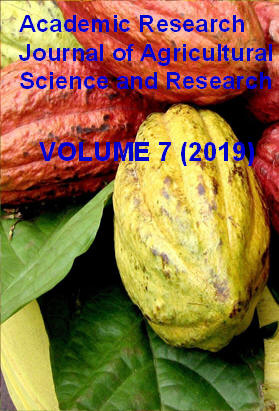|
ISSN: 2360-7874 |
Academic Research Journal of
Agricultural Science and Research |
|||||||||||||||||||
|
Vol. 7(6), pp. 289-295, September 2019 Research Review on Breeding Maize (Zea mays L.) for Drought and Low- N Stresses
Mamud Aman
Ethiopian Institute of Agricultural Research, Hawassa maize research sub-center, P.Box: 1793,Hawassa, Ethiopia. Corresponding author’s email: mamudaman@gmail.com, Phone cell+251935942016
Accepted 18 April 2019
Drought and low N are the most important a biotic factors that affects maize production. Drought affects maize at different stages of development starting from crop establishment up to grain filling. Maize grain yield is affected to some degree at almost all growth stages; however, the crop is more susceptible during flowering. Nitrogen is the most important mineral nutrient for plant development and is the most limiting nutrient in maize production, as it is the most mobile in the soil and the nutrient needed in the largest amounts by the crop. Accordingly, nitrogen deficiency results in decreased crop leaf-area, photosynthetic assimilation and seed growth which in turns affect the yield. In this review there were more research conducted to see the effects of drought and low N on maize crop and breeding strategies and techniques used by plant breeders to develop new cultivars that are able to resist a biotic stresses particularly, drought and low-N in their new environment. Generally, three selection strategies used by plant breeders to overcome these problems are selecting under optimum conditions, under stress conditions, and selecting in a combination of stressed and unstressed environments. Of these selections under stressed environments are the most common to develop drought and low N tolerant maize varieties.
Keywords: Maize, Drought, Low N
How to cite this article (APA Style): Mamud A (2019). Review on Breeding Maize (Zea mays L.) for Drought and Low- N Stresses. Acad. Res. J. Agri. Sci. Res. 7(6): 289-295
|
|||||||||||||||||||
